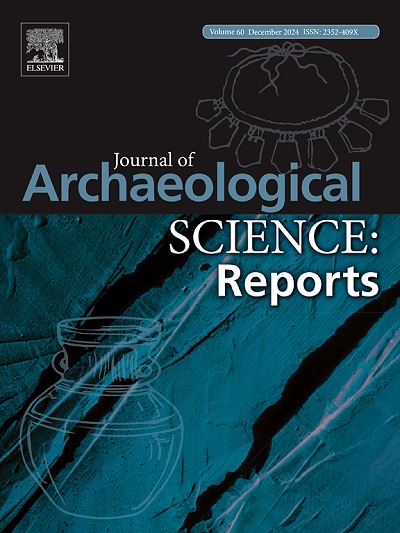Medieval landscapes of Corsica: Farming and cultural practices and environments as evidenced by an anthracological study of three archaeological castellated sites (Rostino, Contudine and L’Ortolo)
IF 1.5
2区 历史学
0 ARCHAEOLOGY
引用次数: 0
Abstract
The medieval landscapes of Corsica are still poorly known because written sources are scarce and few anthracological analyses have been carried out. Medieval rescue archaeology is little developed in the island. The programmed excavations mainly focus on castra – castellated sites grouped and fortified from the year 1000 and designed to shelter the inermes in the protective shade of the manorial tower. However, Corsica is of major paleoecological interest: it is a mountain seated in the middle of the sea where altitudinal vegetation changes are very rapid, and its granitic and volcanic origin has led to the development of silicicolous vegetation. The anthracological analyses carried out on the castra of Contudine, Rostino and L’Ortolo offer the possibility of reconstructing their woody environment and sometimes their evolution between the 13th and 15th centuries. They also lead to a better understanding of the practices linked to firewood or timber collection. In this perspective, new tools such as anthraco-entomology or quantitative eco-anatomy bring a decisive contribution: the way in which wood was collected for the domestic hearth is better understood, and the results highlight that fruit crops – which were enriched by new species – clearly increased at the end of the Middle Ages.
科西嘉岛的中世纪景观:农业、文化实践和环境,通过对三个考古城堡遗址(Rostino、Contudine和L 'Ortolo)的人类学研究证明。
科西嘉岛的中世纪景观仍然鲜为人知,因为书面资料很少,而且很少进行人类学分析。中世纪的抢救考古在岛上还不发达。计划中的挖掘主要集中在从1000年开始分组和强化的城堡遗址上,这些遗址被设计成在庄园塔楼的保护性阴影下庇护囚犯。然而,科西嘉岛具有重要的古生态价值:它是一座位于海中央的山脉,海拔植被变化非常迅速,其花岗岩和火山起源导致了硅色植被的发展。对Contudine, Rostino和L 'Ortolo的卡斯特进行的人类学分析提供了重建其树木环境的可能性,有时他们在13至15世纪之间的演变。它们还有助于更好地理解与木柴或木材收集有关的做法。从这个角度来看,诸如炭疽病昆虫学或定量生态解剖学等新工具带来了决定性的贡献:人们更好地了解了为家庭壁炉收集木材的方式,而且研究结果强调了水果作物(因新物种而丰富)在中世纪末期明显增加。
本文章由计算机程序翻译,如有差异,请以英文原文为准。
求助全文
约1分钟内获得全文
求助全文
来源期刊

Journal of Archaeological Science-Reports
ARCHAEOLOGY-
CiteScore
3.10
自引率
12.50%
发文量
405
期刊介绍:
Journal of Archaeological Science: Reports is aimed at archaeologists and scientists engaged with the application of scientific techniques and methodologies to all areas of archaeology. The journal focuses on the results of the application of scientific methods to archaeological problems and debates. It will provide a forum for reviews and scientific debate of issues in scientific archaeology and their impact in the wider subject. Journal of Archaeological Science: Reports will publish papers of excellent archaeological science, with regional or wider interest. This will include case studies, reviews and short papers where an established scientific technique sheds light on archaeological questions and debates.
 求助内容:
求助内容: 应助结果提醒方式:
应助结果提醒方式:


